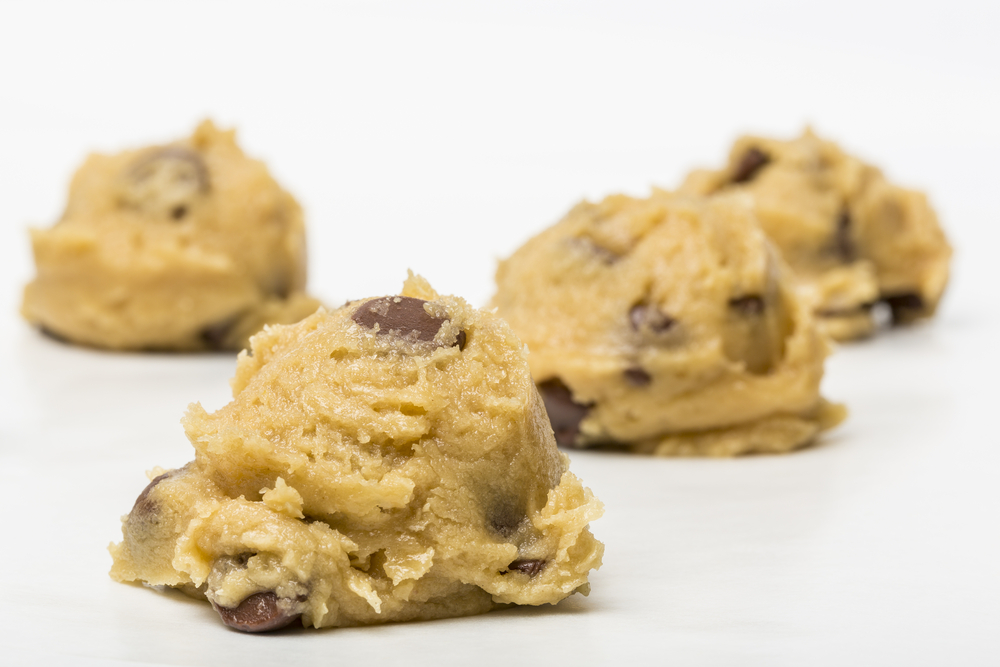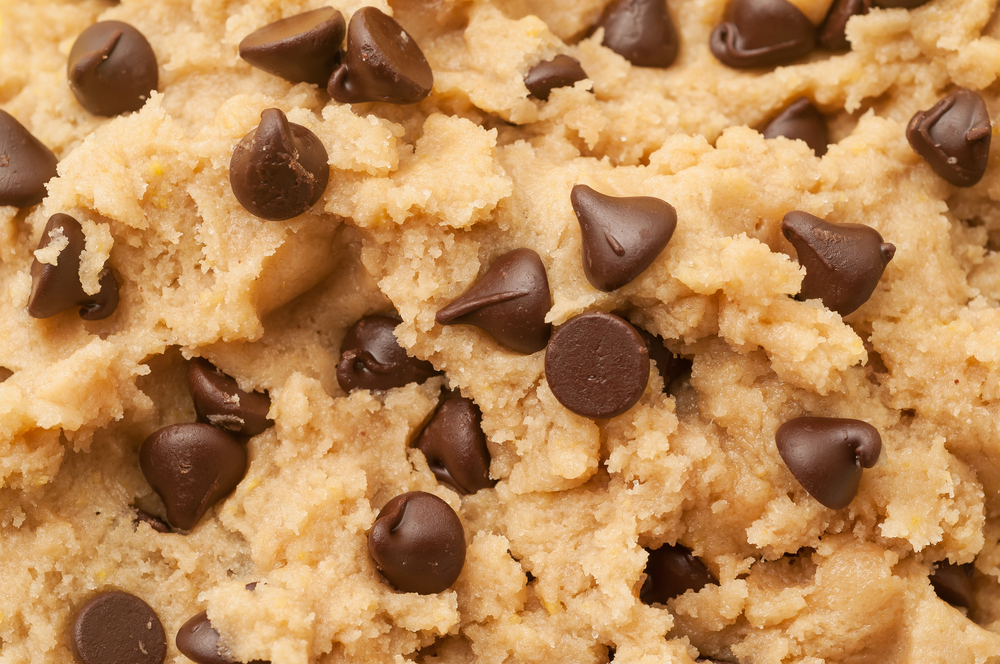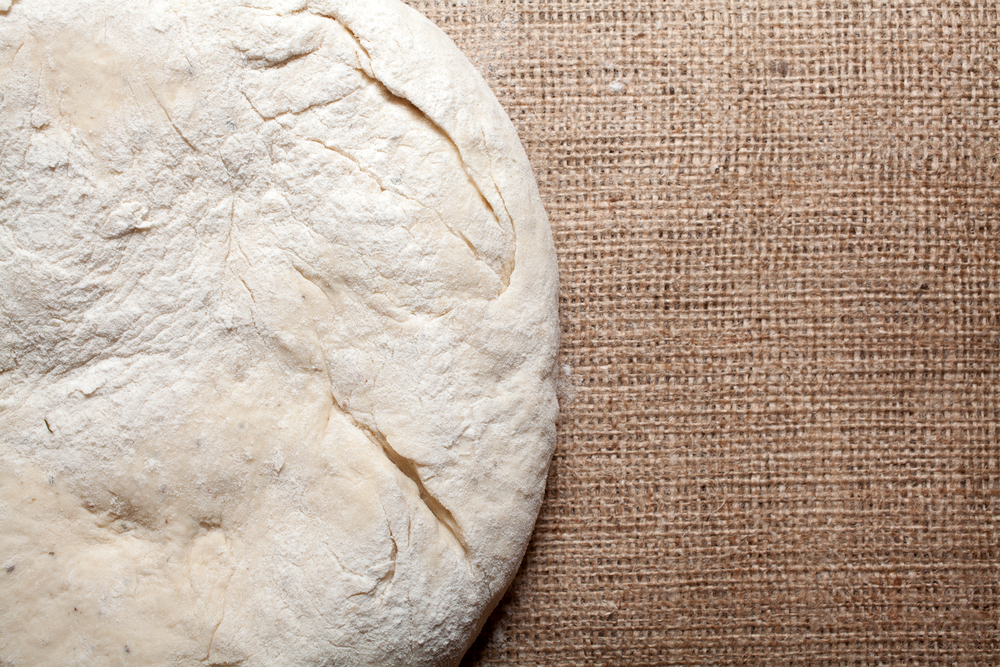As someone who loves pierogi, I know how important it is to reheat them properly. Pierogi are a traditional Polish dish made of dough filled with savory or sweet ingredients, such as potato and cheese, sauerkraut and mushroom, or blueberries.
They are delicious when freshly cooked, but they can also be reheated for later consumption.
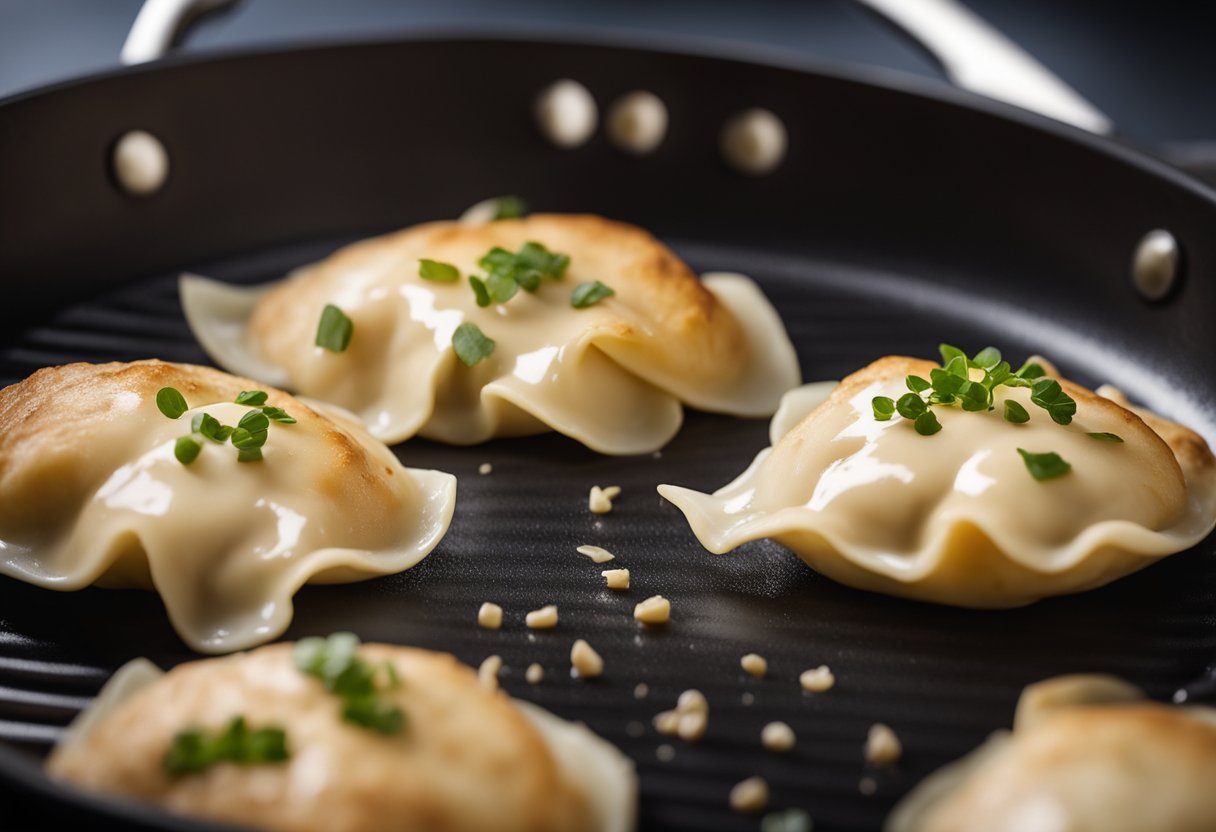
In this article, I will share my knowledge on how to reheat pierogi to optimize their flavor and texture. I will cover the preparation for reheating pierogi, various reheating methods, and tips for serving and presenting them.
I will also address some frequently asked questions about pierogi reheating and storage. Whether you have leftover pierogi from a family dinner or you want to enjoy them on a lazy day, this guide will help you reheat them like a pro.
Key Takeaways
- Proper preparation is key to reheating pierogi.
- There are various reheating methods, such as boiling, frying, baking, and microwaving.
- Optimizing flavor and texture can be achieved by adding butter, onions, sour cream, or other toppings.
Preparation for Reheating Pierogi
When it comes to reheating pierogi, preparation is key. Proper preparation ensures that your pierogi will be heated evenly and thoroughly, resulting in a delicious and satisfying meal.
In this section, I will cover the two main aspects of preparation: thawing frozen pierogi and setting up your kitchen.
Thawing Frozen Pierogi
If you have frozen pierogi that you want to reheat, the first step is to thaw them properly. You can thaw pierogi in the refrigerator overnight or use a microwave to defrost them quickly.
If you choose to use the microwave, place the pierogi on a microwave-safe plate and cover them with a damp paper towel. Microwave on high for 2-3 minutes, or until the pierogi are thawed.
Setting Up Your Kitchen
Once your pierogi are thawed, it’s time to set up your kitchen for reheating. Here are some tips to help you get started:
- Butter or Oil: Depending on your preferred method of reheating, you may need butter or oil. For example, if you plan to use a skillet, you’ll need to melt some butter or oil in the pan before adding the pierogi.
- Parchment Paper and Baking Sheet: If you plan to reheat your pierogi in the oven, you’ll need to line a baking sheet with parchment paper to prevent sticking.
- Skillet or Non-Stick Skillet: A skillet or non-stick skillet is a great tool for reheating pierogi. Be sure to heat the skillet over medium heat and add butter or oil before adding the pierogi to the pan.
- Airtight Container or Plastic Wrap: If you have leftover pierogi that you want to reheat later, store them in an airtight container or wrap them in plastic wrap to keep them fresh.
By following these tips, you’ll be well on your way to reheating pierogi like a pro.
Reheating Methods
When it comes to reheating pierogi, there are several methods to choose from. Each method has its own unique advantages and disadvantages.
Here are the most common ways to reheat pierogi:
Oven Reheating
Oven reheating is a popular method for reheating pierogi. It is a great way to get a crispy texture and maintain the flavor of the pierogi.
To reheat pierogi in the oven, preheat the oven to 350°F (175°C). Place the pierogi on a baking sheet and bake for 10-15 minutes, or until the pierogi are heated through and crispy.
Stovetop Reheating
Stovetop reheating is another popular method for reheating pierogi. It is a quick and easy way to reheat pierogi and maintain their tender texture.
To reheat pierogi on the stovetop, add a small amount of oil or butter to a non-stick pan over medium heat. Once heated, add the pierogi and cook for 2-3 minutes on each side, or until heated through.
Microwave Reheating
Microwave reheating is a convenient and fast method for reheating pierogi. However, it can result in a less crispy texture.
To reheat pierogi in the microwave, place them on a microwave-safe plate and cover with a damp paper towel. Microwave on high for 30 seconds to 1 minute, or until heated through.
Air Fryer Reheating
Air fryer reheating is a newer method for reheating pierogi. It is a great way to get a crispy texture without the use of oil.
To reheat pierogi in an air fryer, preheat the air fryer to 350°F (175°C). Place the pierogi in the air fryer basket and cook for 5-7 minutes, or until heated through and crispy.
Overall, each reheating method has its own unique advantages and disadvantages. When choosing a method, consider the texture and flavor you want to achieve.
Oven and air fryer reheating are great for getting a crispy texture, while stovetop and microwave reheating are better for maintaining a tender texture.
Optimizing Flavor and Texture
When reheating pierogi, it is important to consider how to optimize their flavor and texture. By following a few simple steps, you can ensure that your pierogi will be just as delicious as they were when they were first made.
Using Butter and Oil
One way to enhance the flavor and texture of reheated pierogi is to use melted butter or olive oil. This will help to keep the pierogi moist and prevent them from becoming dry and tough.
Simply melt a small amount of butter or olive oil in a pan or in the microwave, and brush it over the pierogi before reheating them. This will help to create a crispy exterior and a soft, tender interior.
Seasoning and Sauces
Another way to enhance the flavor of reheated pierogi is to add seasoning or sauces. Pierogi can be savory or sweet, so you can choose a seasoning or sauce that complements the flavor of the pierogi. For savory pierogi, try adding sautéed onions or a sprinkle of salt.
For sweet potato pierogi, a drizzle of maple syrup or a sprinkle of cinnamon can enhance the natural sweetness of the potato.
Sour cream is a classic topping for pierogi, and it can help to balance out the richness of the dish. You can also experiment with other sauces, such as tomato sauce or pesto, to add a different flavor profile to the dish.
By using melted butter or oil and adding seasoning or sauces, you can optimize the flavor and texture of reheated pierogi. Whether you prefer savory or sweet pierogi, there are many ways to enhance the natural flavors of this delicious dish.
Serving and Presentation
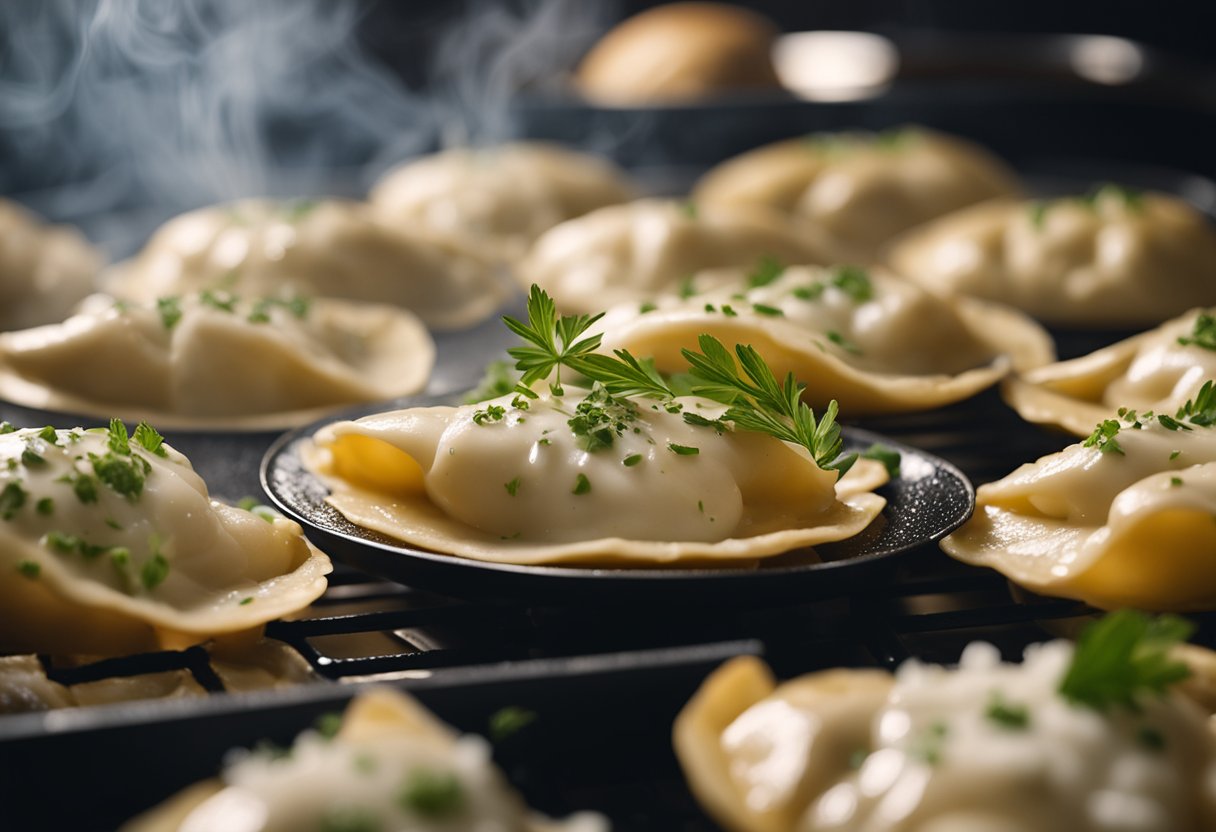
When it comes to serving pierogi, there are a few things to keep in mind to ensure that they look and taste their best. In this section, I will cover some tips and tricks for serving and presenting pierogi.
Accompaniments
Pierogi can be served with a variety of accompaniments, depending on your personal taste and the occasion. Some common options include sauerkraut, mushrooms, chives, and ketchup.
You can also get creative with your toppings, such as adding bacon bits or caramelized onions. The possibilities are endless!
When choosing accompaniments, it’s important to consider the flavors and textures of the pierogi. For example, sauerkraut can add a tangy and crunchy element, while mushrooms can provide a savory and meaty flavor. Experiment with different combinations to find what works best for you.
Plating Techniques
The presentation of pierogi can be just as important as the taste. Here are a few plating techniques to consider:
- Stacking: If you’re serving pierogi as an appetizer or side dish, you can stack them neatly on a plate to create an eye-catching display. Add a dollop of sour cream or a sprinkle of chives on top for a finishing touch.
- Arranging: For a more formal presentation, you can arrange the pierogi in a circular pattern on a plate. This is a great option if you’re serving pierogi as a main course. Add some sautéed vegetables or a side salad to complete the meal.
- Individual Servings: If you’re serving pierogi as a snack or finger food, consider serving them in individual portions. Use a small bowl or plate and add a dipping sauce, such as ketchup or sour cream, on the side.
Remember to keep the presentation simple and elegant. Pierogi are a classic dish that speak for themselves, so don’t overdo it with too many garnishes or decorations. With these tips, you’ll be able to serve and present pierogi like a pro!
Storage and Preservation
As a pierogi lover, I know how important it is to store and preserve these delicious dumplings properly.
Here are some tips to help you keep your pierogies fresh and tasty for as long as possible.
Refrigeration Tips
If you plan to eat your pierogies within a few days, it’s best to store them in the refrigerator. Place them in an airtight container or a zip-top bag and make sure they are tightly sealed.
This will help prevent them from drying out or absorbing any odors from other foods in the fridge.
When reheating refrigerated pierogies, it’s best to use a microwave or stovetop method. Avoid using the oven, as it can dry out the pierogies and make them tough.
Freezing and Re-Freezing
If you have leftover pierogies that you won’t be eating within a few days, you can freeze them to extend their shelf life.
To freeze pierogies, place them in a single layer on a baking sheet and put them in the freezer for a few hours until they are frozen solid. Then, transfer them to an airtight container or a zip-top bag and label them with the date.
When you’re ready to eat the frozen pierogies, you can reheat them using the stovetop or oven method. Avoid using the microwave, as it can make the pierogies rubbery.
It’s important to note that you should not re-freeze pierogies once they have been thawed. This can cause the texture and flavor to deteriorate. If you have leftover thawed pierogies, it’s best to eat them within a day or two or discard them.
By following these simple tips, you can ensure that your pierogies stay fresh and delicious for as long as possible.
Frequently Asked Questions
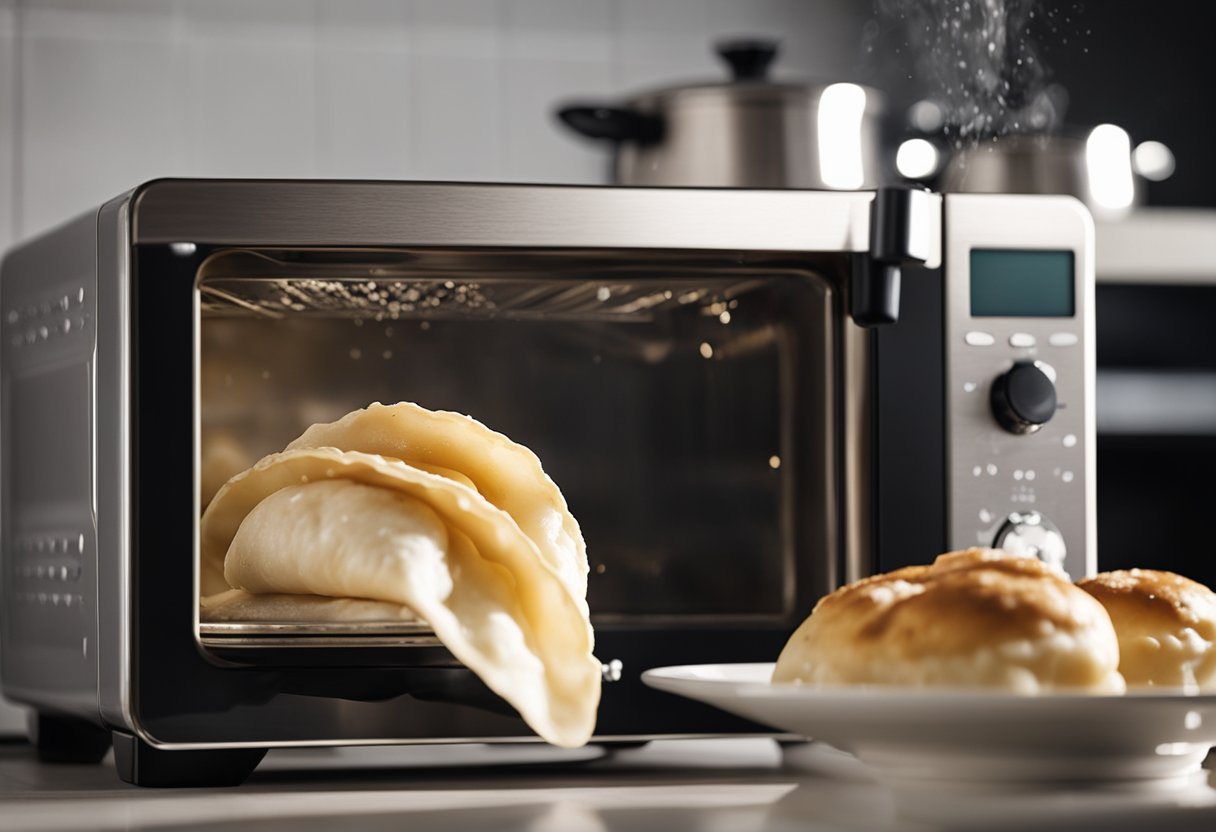
What is the best method to reheat cooked pierogies?
The best method to reheat cooked pierogies depends on your personal preference and the equipment you have available.
Some popular methods include reheating in the oven, on the stovetop, or in the microwave. Each method has its advantages and disadvantages, so it’s best to choose the one that works best for you.
Can you microwave pierogies, and if so, for how long?
Yes, you can microwave pierogies. To do so, place the pierogies in a microwave-safe dish and cover with a damp paper towel. Microwave on high for 1-2 minutes, or until heated through. Be sure to check the pierogies frequently to avoid overcooking.
What are the steps to reheat pierogies in the oven?
To reheat pierogies in the oven, preheat your oven to 350°F (175°C). Place the pierogies on a baking sheet and cover with foil. Bake for 10-15 minutes, or until heated through. For a crispier texture, remove the foil during the last few minutes of baking.
Is it possible to reheat pierogies in a skillet, and what are the instructions?
Yes, you can reheat pierogies in a skillet. To do so, heat a small amount of oil or butter in a nonstick skillet over medium heat. Add the pierogies and cook for 2-3 minutes per side, or until heated through and crispy.
How long can you keep cooked pierogies in the refrigerator before reheating?
Cooked pierogies can be kept in the refrigerator for up to 3 days before reheating. Be sure to store them in an airtight container to prevent them from drying out or absorbing any odors from other foods.
What are some recommended sauces to serve with reheated pierogies?
There are many sauces that pair well with reheated pierogies. Some popular options include sour cream, applesauce, caramelized onions, mushroom sauce, or tomato sauce.
You can also experiment with different seasonings and spices to create your own unique flavor combinations.




